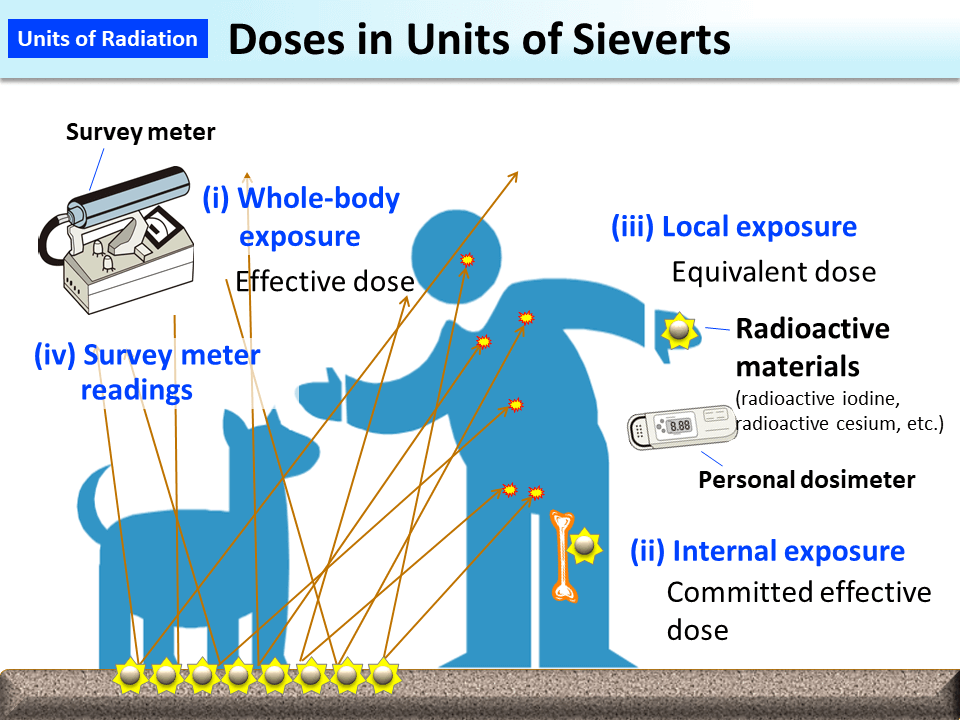Doses in Units of Sieverts
Sievert is used as the unit for (i) radiation dose to the whole body (effective dose) (p.41 of Vol. 1, "Difference between Values of Effective Dose and Dose Equivalent"), (ii) radiation dose due to internal exposure (committed effective dose) (p.53 of Vol. 1, "Committed Effective Doses"), and (iii) dose from local exposure, in which exposure to radiation is limited to a certain location (equivalent dose). They are common in that they all take into account the risks of cancer and hereditary effects on individuals or tissues exposed.
Sievert may also be used for (iv) the readings of survey meters. These values are obtained by multiplying absorbed doses (gray) in the air by a certain factor for conversion to sievert, and are indicated as larger approximations of effective doses received by humans. They may be considered as approximations of effective doses in sieverts when the whole body is evenly exposed to radiation (p.43 of Vol. 1, "Various Measuring Instruments").
- Included in this reference material on March 31, 2013
- Updated on March 31, 2015

